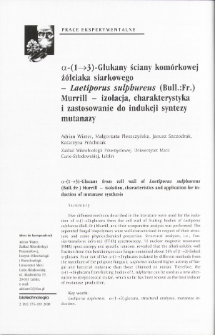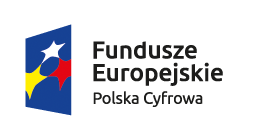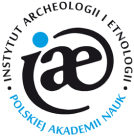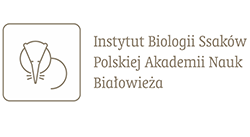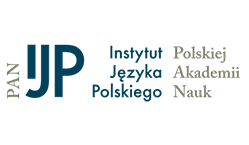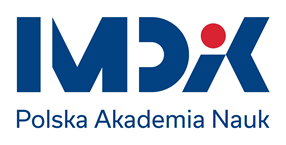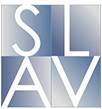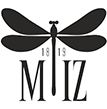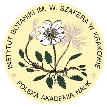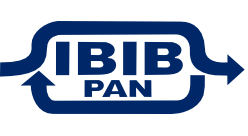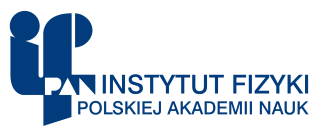- Wyszukaj w całym Repozytorium
- Piśmiennictwo i mapy
- Archeologia
- Baza Młynów
- Nauki przyrodnicze
Wyszukiwanie zaawansowane
Wyszukiwanie zaawansowane
Wyszukiwanie zaawansowane
Wyszukiwanie zaawansowane
Wyszukiwanie zaawansowane

Obiekt
Tytuł: L-(1—>3)-Glucans from cell wall of Laetiporus sulphureus (Bull.:Fr.) Murrill - isolation, characteristics and application for induction of mutanase synthesis
Twórca:
Wiater, Adrian ; Pleszczyńska, Małgorzata ; Szczodrak, Janusz ; Próchniak, Katarzyna
Data wydania/powstania:
Typ zasobu:
Inny tytuł:
Wydawca:
Committee on Biotechnology PAS ; Institute of Bioorganic Chemistry PAS
Opis:
Abstrakt:
Five different methods described in the literature were used for the isolation of a-(l->3)-glucans from the cell wall of fruiting bodies of Laetiporus sulphureus (Bull.iFr.) Murrill, and their comparative analysis was performed. The separated fungal biopolymers were well-characterized in respect of their structure and some physicochemical properties. Structural analyses, i.e., Fou- rier-transform infra-red (FT-IR) spectroscopy, 'FI nuclear magnetic resonance (NMR) spectroscopy and specific rotation, revealed that the alkali-soluble wall fraction from this basidiomycetous fungus contained about 56% of (1—>3)-linked a-glucans. Four out of five a-(l—>3)-glucans isolated by different methods from the mycelium of the polypore fungus L. sulphureus induced higher activity of fungal and bacterial mutanase than those obtained on mutan. Therefore, the a-(l—>3)-glucans from fruiting bodies ofL sulphureus can be used as a new alternative to streptococcal mutan, which so far has been known as the best inducer of mutanase production.
Czasopismo/Seria/cykl:
Biotechnologia, vol.81, 2 (2008)-.
Tom:
Zeszyt:
Strona pocz.:
Strona końc.:
Szczegółowy typ zasobu:
Format:
Identyfikator zasobu:
0860-7796 ; oai:rcin.org.pl:73915 ; IChB B-76
Źródło:
Library of Institute of Bioorganic Chemistry PAS
Język:
Język streszczenia:
Zakres czasowy:
Prawa:
Creative Commons Attribution BY-SA 4.0 license
Zasady wykorzystania:
Digitalizacja:
Institute of Bioorganic Chemistry of the Polish Academy of Science
Lokalizacja oryginału:
Institute of Bioorganic Chemistry of the Polish Academy of Science
Dofinansowane ze środków:
Dostęp:
Kolekcje, do których przypisany jest obiekt:
- Repozytorium Cyfrowe Instytutów Naukowych > Kolekcje Partnerów > Instytut Chemii Bioorganicznej PAN > Artykuły
- Repozytorium Cyfrowe Instytutów Naukowych > Piśmiennictwo > Czasopisma/Artykuły
Data ostatniej modyfikacji:
2 paź 2020
Data dodania obiektu:
27 cze 2019
Liczba pobrań / odtworzeń:
445
Wszystkie dostępne wersje tego obiektu:
https://rcin.org.pl./publication/96748
Wyświetl opis w formacie RDF:
Wyświetl opis w formacie RDFa:
Wyświetl opis w formacie OAI-PMH:
Obiekty Podobne
Wiater, Adrian Pleszczyńska, Małgorzata Szczodrak, Janusz
Wiater, Adrian Pleszczyńska, Małgorzata Szczodrak, Janusz
Wiater, Adrian Szczodrak, Janusz
Szczodrak, Janusz Szczodrak, Zofia Wiater, Adrian
Szczodrak, Janusz Szczodrak, Zofia Wiater, Adrian
Borkowska, Bożenna
Ziółkowski, Piotr Babula- Skowrońska, Danuta Kaczmarek, Małgorzata Cieśla, Agata Sadowski, Jan

 INSTYTUT ARCHEOLOGII I ETNOLOGII POLSKIEJ AKADEMII NAUK
INSTYTUT ARCHEOLOGII I ETNOLOGII POLSKIEJ AKADEMII NAUK
 INSTYTUT BADAŃ LITERACKICH POLSKIEJ AKADEMII NAUK
INSTYTUT BADAŃ LITERACKICH POLSKIEJ AKADEMII NAUK
 INSTYTUT BADAWCZY LEŚNICTWA
INSTYTUT BADAWCZY LEŚNICTWA
 INSTYTUT BIOLOGII DOŚWIADCZALNEJ IM. MARCELEGO NENCKIEGO POLSKIEJ AKADEMII NAUK
INSTYTUT BIOLOGII DOŚWIADCZALNEJ IM. MARCELEGO NENCKIEGO POLSKIEJ AKADEMII NAUK
 INSTYTUT BIOLOGII SSAKÓW POLSKIEJ AKADEMII NAUK
INSTYTUT BIOLOGII SSAKÓW POLSKIEJ AKADEMII NAUK
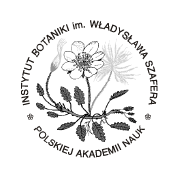 INSTYTUT CHEMII FIZYCZNEJ PAN
INSTYTUT CHEMII FIZYCZNEJ PAN
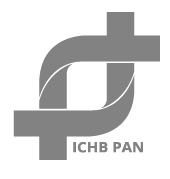 INSTYTUT CHEMII ORGANICZNEJ PAN
INSTYTUT CHEMII ORGANICZNEJ PAN
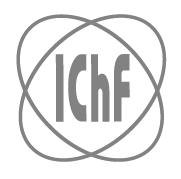 INSTYTUT FILOZOFII I SOCJOLOGII PAN
INSTYTUT FILOZOFII I SOCJOLOGII PAN
 INSTYTUT GEOGRAFII I PRZESTRZENNEGO ZAGOSPODAROWANIA PAN
INSTYTUT GEOGRAFII I PRZESTRZENNEGO ZAGOSPODAROWANIA PAN
 INSTYTUT HISTORII im. TADEUSZA MANTEUFFLA POLSKIEJ AKADEMII NAUK
INSTYTUT HISTORII im. TADEUSZA MANTEUFFLA POLSKIEJ AKADEMII NAUK
 INSTYTUT JĘZYKA POLSKIEGO POLSKIEJ AKADEMII NAUK
INSTYTUT JĘZYKA POLSKIEGO POLSKIEJ AKADEMII NAUK
 INSTYTUT MATEMATYCZNY PAN
INSTYTUT MATEMATYCZNY PAN
 INSTYTUT MEDYCYNY DOŚWIADCZALNEJ I KLINICZNEJ IM.MIROSŁAWA MOSSAKOWSKIEGO POLSKIEJ AKADEMII NAUK
INSTYTUT MEDYCYNY DOŚWIADCZALNEJ I KLINICZNEJ IM.MIROSŁAWA MOSSAKOWSKIEGO POLSKIEJ AKADEMII NAUK
 INSTYTUT PODSTAWOWYCH PROBLEMÓW TECHNIKI PAN
INSTYTUT PODSTAWOWYCH PROBLEMÓW TECHNIKI PAN
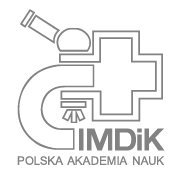 INSTYTUT SLAWISTYKI PAN
INSTYTUT SLAWISTYKI PAN
 SIEĆ BADAWCZA ŁUKASIEWICZ - INSTYTUT TECHNOLOGII MATERIAŁÓW ELEKTRONICZNYCH
SIEĆ BADAWCZA ŁUKASIEWICZ - INSTYTUT TECHNOLOGII MATERIAŁÓW ELEKTRONICZNYCH
 MUZEUM I INSTYTUT ZOOLOGII POLSKIEJ AKADEMII NAUK
MUZEUM I INSTYTUT ZOOLOGII POLSKIEJ AKADEMII NAUK
 INSTYTUT BADAŃ SYSTEMOWYCH PAN
INSTYTUT BADAŃ SYSTEMOWYCH PAN
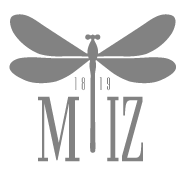 INSTYTUT BOTANIKI IM. WŁADYSŁAWA SZAFERA POLSKIEJ AKADEMII NAUK
INSTYTUT BOTANIKI IM. WŁADYSŁAWA SZAFERA POLSKIEJ AKADEMII NAUK
